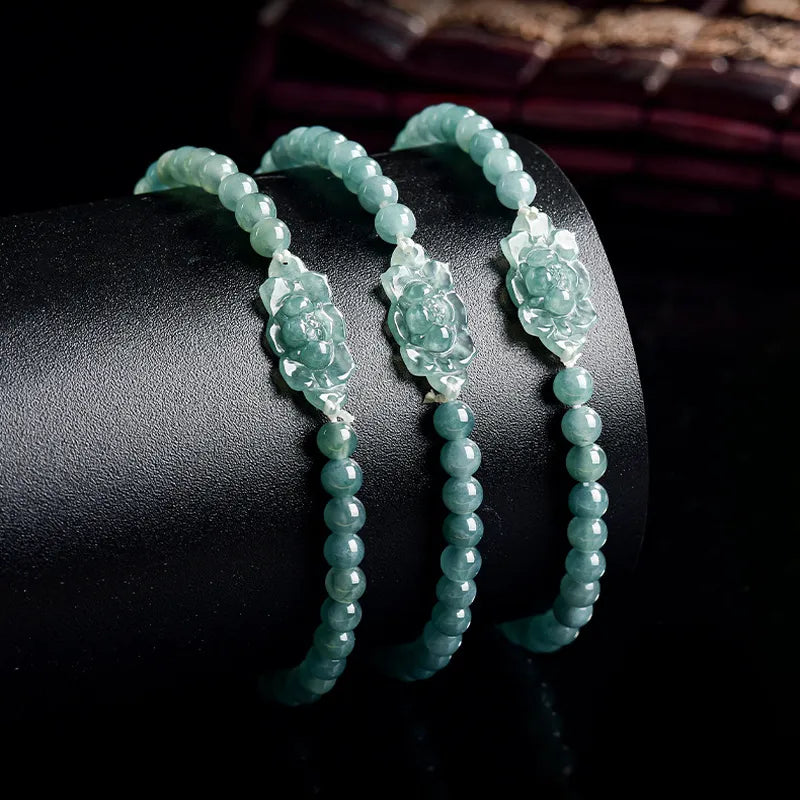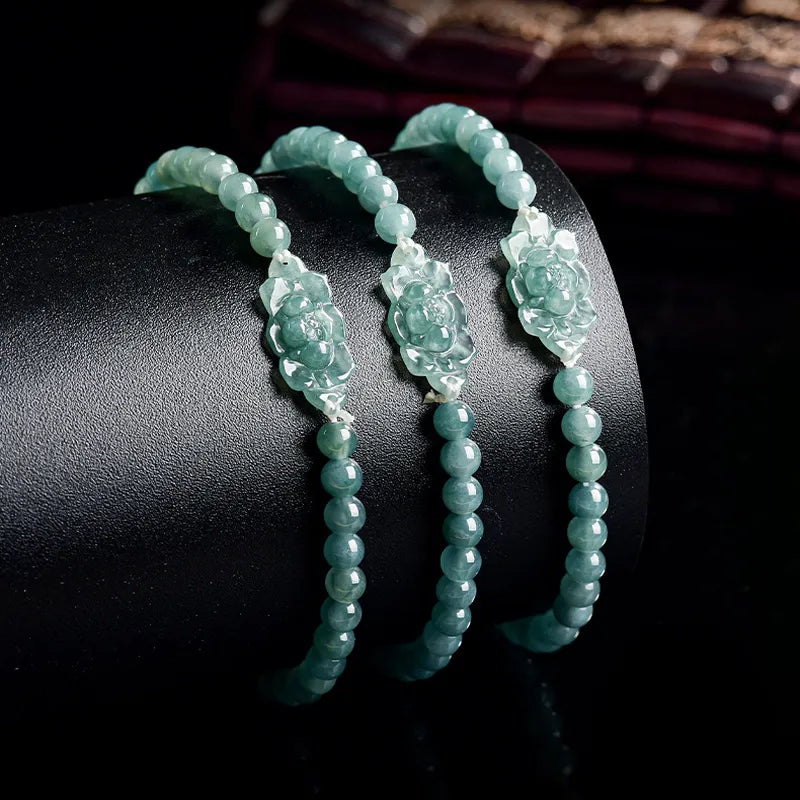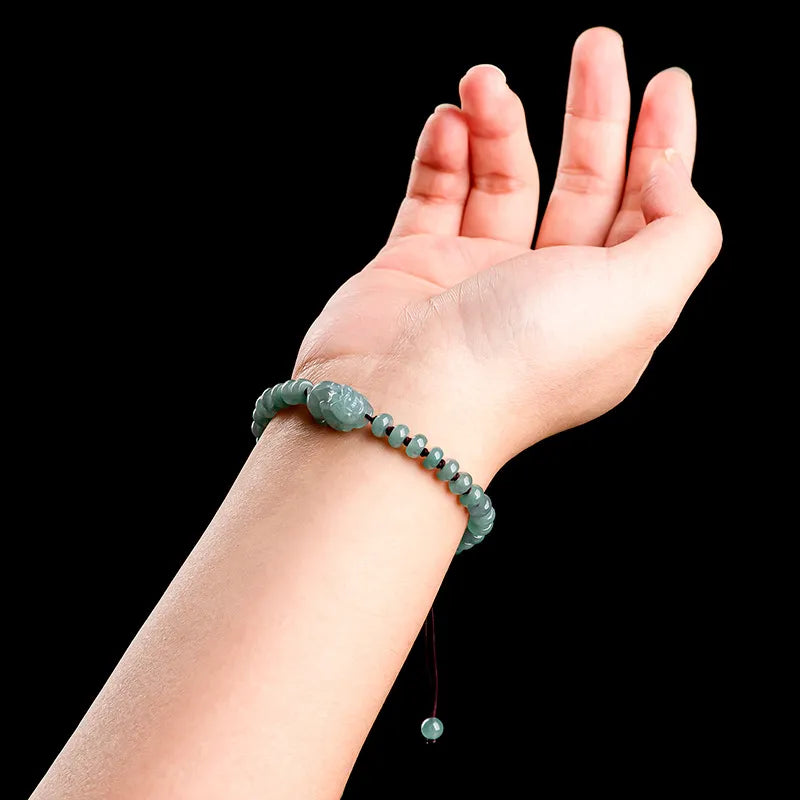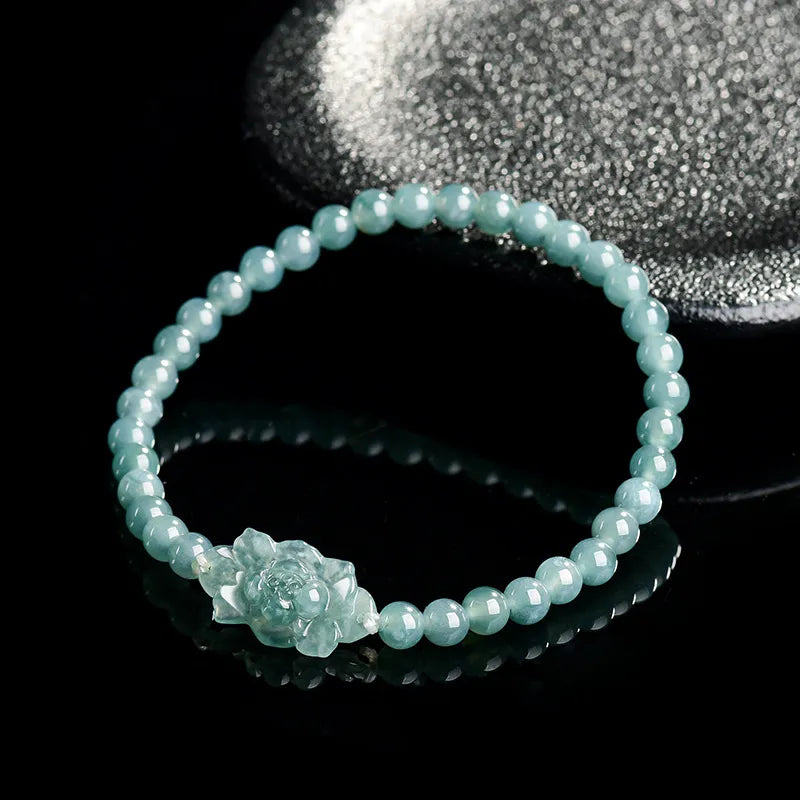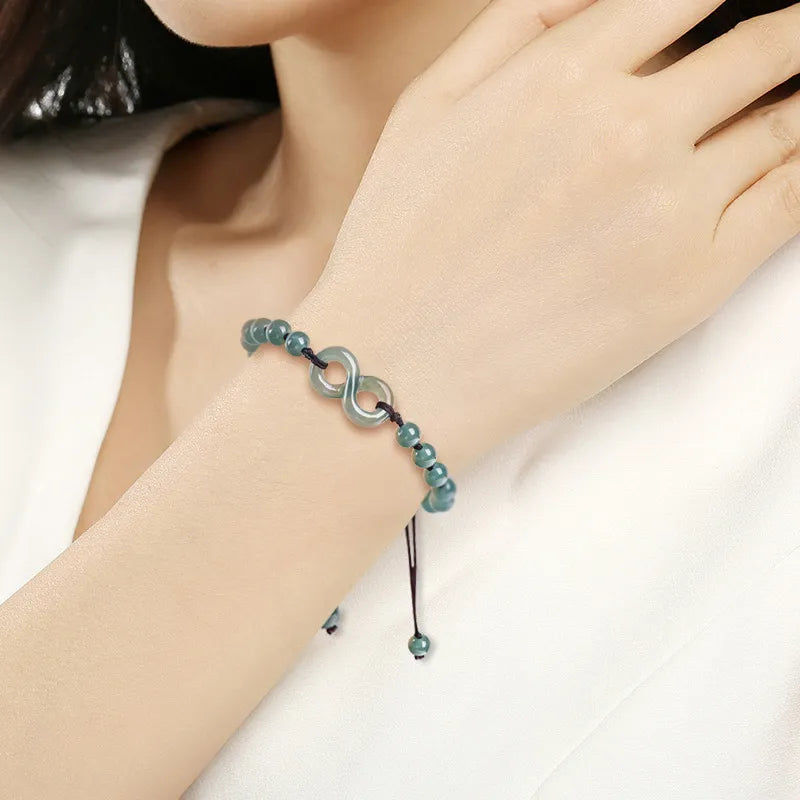The Distinction Between Stone Flowers and Cotton-like Inclusions in Jade Bracelets
Jade bracelets, revered for their cultural significance and aesthetic appeal, often feature internal textures that intrigue collectors and enthusiasts. Among these, stone flowers and cotton-like inclusions are two prominent phenomena, each with distinct characteristics and implications for the jade’s value. Understanding their differences requires a closer look at their formation, visual traits, and impact on the gemstone’s quality.

1. Origins and Composition
Stone flowers and cotton-like inclusions originate from different geological processes.
- Stone Flowers: These are mineral aggregates formed during jade’s crystallization. When trace elements like chromium or iron interact with the primary mineral (nephrite or jadeite), they create intricate patterns resembling floral or dendritic shapes. These formations are embedded within the jade’s matrix, often appearing as translucent or semi-translucent streaks.
- Cotton-like Inclusions: These are fibrous or granular structures composed of mineral impurities (e.g., feldspar, quartz) or microscopic voids. They manifest as wispy, cloud-like clusters or scattered specks, typically white or grayish in color. Unlike stone flowers, they lack defined shapes and are often associated with lower-grade jade due to their impact on transparency.
2. Visual Characteristics
The appearance of stone flowers and cotton-like inclusions varies significantly, influencing the jade’s aesthetic appeal.
-
Stone Flowers:
- Shape: Often resemble organic forms like branches, leaves, or snowflakes.
- Color: Ranges from translucent white to greenish hues, depending on the mineral composition.
- Texture: Smooth and integrated into the jade’s structure, enhancing its visual depth.
- Example: In high-quality jadeite, stone flowers may appear as delicate, intertwined patterns that glow under backlighting, adding a sense of movement.
-
Cotton-like Inclusions:
- Shape: Irregular and diffuse, resembling cotton fibers or mist.
- Color: Predominantly white or gray, though some may exhibit a faint yellow tint.
- Texture: Soft and cloudy, often disrupting the jade’s clarity.
- Example: In lower-grade nephrite, heavy cotton-like inclusions can create a murky appearance, reducing the stone’s brilliance.
3. Impact on Jade Quality
The presence and distribution of these inclusions play a crucial role in determining a jade bracelet’s value.
-
Stone Flowers:
- Positive Impact: When finely distributed, stone flowers enhance the jade’s uniqueness and artistic value. Collectors often prize pieces with rare or symmetrical patterns, as they signify natural beauty and craftsmanship.
- Negative Impact: Overly dense or chaotic stone flowers may detract from the jade’s clarity, especially if they obscure the primary color (e.g., imperial green in jadeite).
-
Cotton-like Inclusions:
- Negative Impact: These inclusions are generally viewed as flaws, as they reduce transparency and light penetration. Heavy cotton can make the jade appear dull or lifeless, lowering its market desirability.
- Exception: In certain artistic styles, such as “snowscape” jade, scattered cotton-like inclusions are intentionally incorporated to mimic winter scenes, adding cultural or thematic value.
4. Identification Techniques
Distinguishing between stone flowers and cotton-like inclusions requires careful observation and tools.
-
Natural Light Inspection:
- Stone flowers often reflect light differently, creating subtle contrasts against the jade’s base color.
- Cotton-like inclusions appear as uniform, opaque patches that scatter light.
-
Backlighting:
- Stone flowers may transmit light partially, revealing their internal structure.
- Cotton-like inclusions block light entirely, creating dark shadows.
-
Magnification:
- A loupe or microscope can reveal the crystalline nature of stone flowers, which often exhibit hexagonal or fibrous patterns.
- Cotton-like inclusions appear as amorphous clusters with no discernible structure.
Conclusion
Stone flowers and cotton-like inclusions are integral to the identity of jade bracelets, each telling a story of the stone’s formation and history. While stone flowers are celebrated for their artistic potential, cotton-like inclusions are often seen as imperfections—though context matters. A nuanced understanding of these features empowers collectors to appreciate jade’s natural diversity and make informed evaluations. Whether admired for their beauty or scrutinized for their flaws, these inclusions remind us that perfection in jade lies not in uniformity, but in the harmony of its unique characteristics.
